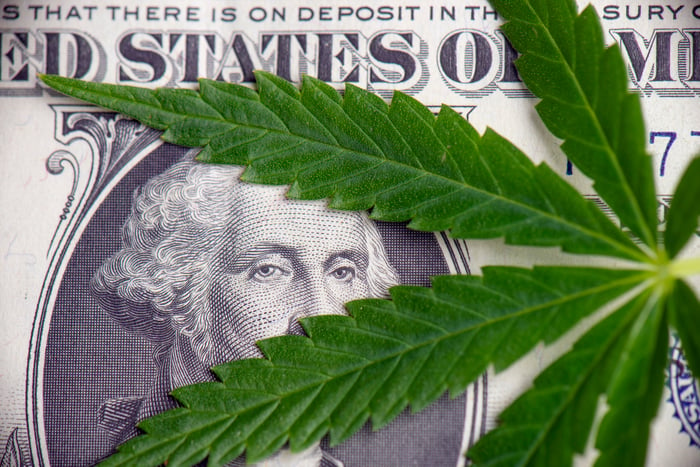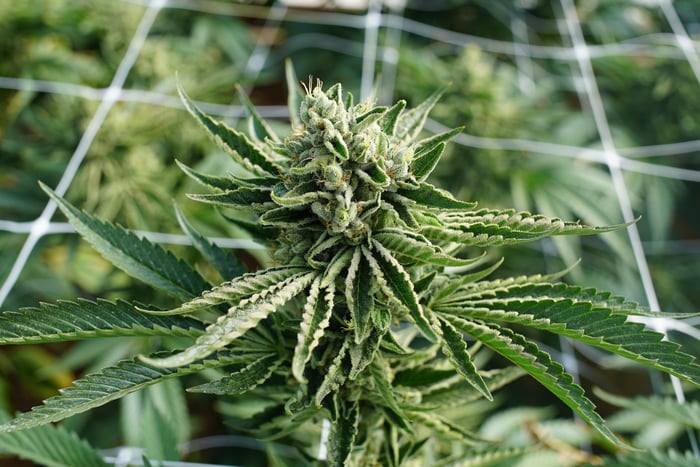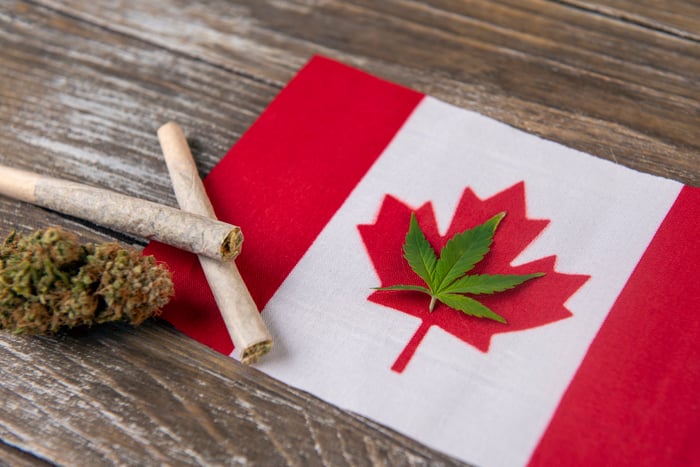We may be in the traditional lull for earnings reports, but news never sleeps when it comes to the cannabis industry.
On Wednesday, Sept. 11, after the closing bell, the second-largest marijuana stock in the world by market cap, the industry's largest producer, and easily the most popular stock among millennial investors, Aurora Cannabis (ACB -2.79%) released its highly anticipated fourth-quarter and full-year operating results.

Image source: Getty Images.
No joke: Aurora Cannabis missed its own recently issued guidance
To many investors, the headline figures for this quarterly report looked like nothing more than a formality, with a number of other underlying numbers expected to take precedence. That's because, five weeks ago on Aug. 6, Aurora Cannabis provided an update on its fourth-quarter operating results.
Included in that update was (unaudited) guidance to expect 100 million Canadian dollars (CA$100 million) to CA$107 million in fourth-quarter net revenue after accounting for net excise taxes paid. The company also guided for CA$90 million to CA$95 million in cannabis revenue and upped its quarterly production from a previous forecast of 25,000 kilos to a fresh range of 25,000 kilos to 30,000 kilos. Lastly, the company suggested that it was continuing to "track toward positive adjusted EBITDA [earnings before interest, taxes, depreciation, and amortization]."
Put a bow on it and it's ready to serve, right? Well, not exactly.
When Aurora reported its fiscal fourth-quarter results on Wednesday, a few things were... amiss. For starters, even though the company's adjusted EBITDA headed in the right direction -- negative CA$11.7 million in Q4 2019, vs. negative CA$36.6 million in Q3 2019 -- this isn't exactly "on track toward positive adjusted EBITDA." Aurora has made it seem for months that the company would be turning the corner to recurring positive adjusted EBITDA by the fourth quarter, and that simply wasn't the case.
More egregious, though, was the fact that Aurora Cannabis only generated CA$98.9 million in net revenue. That's right. Despite providing quarterly guidance just five weeks earlier, Aurora Cannabis missed its own range by more than CA$1 million. It also missed Wall Street's consensus revenue figure by more than CA$9 million.

Image source: Getty Images.
Three things to like about Aurora's Q4 results
Putting aside the ridiculousness of Aurora whiffing on its own recently issued guidance, the quarter wasn't a complete mess. Despite my criticism of the company, three figures stand out as being particularly impressive.
First, how about Aurora's 3 percentage-point increase in gross margin before fair-value adjustments on biological assets from the sequential quarter? The company's 58% gross margin is exactly what investors need to see when peers like Canopy Growth are producing an eye-poppingly bad gross margin of 15%, as it did during its fiscal first quarter.
Mind you, this increase in gross margin was generated despite a considerable uptick in lower margin bulk wholesale sales. It's pretty evident that Aurora is doing a pretty good job of reducing its production costs and pushing higher-margin products when it can.
Secondly, the company's 29,034 kilos produced in the fourth quarter was near the high-end of its own guidance and equaled more than the company produced in the three previous quarters combined. Having Aurora Sky and both of MedReleaf's smaller facilities (now known as Aurora River and Aurora Ridge) fully operational has allowed Aurora Cannabis to maintain its production lead. Still producing at an annual run rate of more than 150,000 kilos, the company has previously guided for an increase in annual run-rate output to at least 625,000 kilos by the end of its fiscal year (June 30, 2020).
Thirdly, the company's SEDAR filing in Canada shows that Aurora ended the quarter with about 1.017 billion shares outstanding. Although the company has crushed investors with dilutive activity in the past, this is the first quarter in a long while where Aurora really didn't issue that many new shares. Now, this doesn't mean Aurora is done aggressively expanding. However, it might make the company more attractive for long-term-oriented investors.

Image source: Getty Images.
Three things that should seriously worry investors
Then again, there's another side to this story.
Maybe the most damning thing in Aurora Cannabis' report, other than its egregious guidance miss, was the following commentary taken from the EBITDA section of the company's press release:
In Q4 2019, adjusted EBITDA loss improved 68% to [CA]$11.7 million from [CA]$36.6 million in the prior quarter. Developing a profitable and robust global cannabis company is extremely important to Aurora. In fiscal 2019, Aurora was focused on excellence in execution, and the Company's KPIs [key performance indicators] show its success in this regard. Furthermore, Aurora has addressed previously identified production bottlenecks and continues to see strong sell-through of the Company's products at the retail level. However, the Canadian consumer channel continues to experience challenges at the retail level in key markets and resolution of this issue is beyond the Company's control. Aurora is working closely with all our regulatory and channel partners to streamline distribution as the Company continues to track toward positive adjusted EBITDA on a consolidated basis.
Note that part about consumer channel supply issues being out of Aurora's control? That's really bad news. It appeared at first that Aurora's August sales guidance meant that changes implemented by Health Canada to expedite licensing and marijuana sales were resolving the supply bottleneck. However, this commentary implies that the existing supply-chain issues aren't going away anytime soon. This is especially sour news considering the upcoming launch of derivative products in three months, which are liable to face the same supply issues as dried flower.
Investors should also be notably disappointed with the company's CA$4.5 million in fourth-quarter dried cannabis sales to the European Union. That's up a meager 12% from the sequential third quarter.
Even though domestic production is bound to take precedence, no marijuana grower has a larger international presence than Aurora. This is a company whose future depends on its success in reaching overseas markets. To see Aurora boost overseas sales by such a small amount, especially with production in the fourth-quarter soaring, is extremely disappointing.

Image source: Getty Images.
A final figure that should worry investors is Aurora's goodwill. Goodwill represents the amount of premium a company paid above and beyond tangible assets when making an acquisition.
Over the past three years, Aurora has made more than a dozen acquisitions and built up a large amount of goodwill on its balance sheet in the process. Even though the amount of goodwill on its balance sheet declined fractionally to CA$3.17 billion from the sequential third quarter, a larger decline was seen in the company's total assets. Long story short, the company's goodwill as a percentage of total assets ticked up 1 percentage point to 58%. That's a lot of goodwill to be lugging around, which in my opinion makes Aurora a likely candidate for substantial writedowns in the future.
There's no doubt that Aurora did some things right in the fiscal fourth quarter. Nevertheless, it remains a very pricey -- and therefore avoidable -- pot stock.





